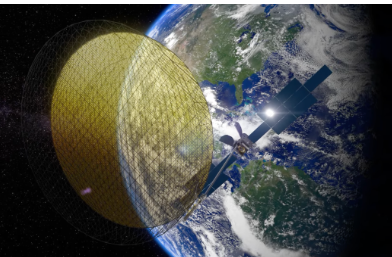



The modern space industry has captivated the imagination of millions worldwide. From SpaceX’s groundbreaking missions to the moonshot ambitions of startups exploring asteroid mining, the allure of space ventures is undeniable. However, as this sector garners increasing public and investor attention, the balance between marketing hype and realistic expectations has become a critical issue. Overpromising can lead to disillusionment, while under-communicating risks missing out on vital funding and support.
This blog explores how space ventures can strike the right balance between creating excitement and maintaining credibility, offering practical insights for organizations navigating this high-stakes landscape.
The Allure of Space Ventures and Marketing Hype
Space ventures inherently evoke a sense of wonder and possibility. They often promise technological breakthroughs, solutions to global challenges, and a glimpse of humanity’s future. As such, marketing plays a crucial role in:
- Attracting Investors: Space projects require substantial capital, often running into billions of dollars. Compelling marketing can galvanize investment by highlighting the potential returns.
- Building Public Interest: From live-streamed launches to engaging social media campaigns, space ventures rely on public enthusiasm to foster a supportive ecosystem.
- Establishing Market Leadership: For companies entering a competitive field, bold claims and visionary goals can help carve out a distinct identity.
However, there is a fine line between visionary marketing and overhyping. Unrealistic promises can lead to unmet expectations, damaging reputations and eroding trust.
Consequences of Overhyping
Overhyping in space ventures can have serious consequences, including:
- Loss of Credibility: Unrealized promises can lead to skepticism from investors, partners, and the public.
- Investor Disillusionment: High expectations may attract initial investment, but failing to deliver risks alienating backers, making future fundraising difficult.
- Reputational Damage: Companies that overpromise and underdeliver may struggle to recover their reputation in a tight-knit industry.
- Undermining Industry Trust: Overhyping by one company can cast doubt on the broader space sector, affecting the perception of all players.
Strategies to Balance Hype and Realism
1. Clearly Define Objectives and Timelines
A lack of specificity often fuels overhyping. To maintain credibility:
- Set Achievable Milestones: Break down ambitious goals into smaller, attainable steps. For example, instead of promising “Mars colonization by 2030,” outline specific achievements like spacecraft testing, orbital missions, and habitat development.
- Communicate Realistic Timelines: Space projects are inherently complex, and delays are common. Transparency about timelines fosters trust and helps manage expectations.
2. Prioritize Transparent Communication
Transparency builds trust. Companies should:
- Acknowledge Risks: Discussing challenges and uncertainties shows a commitment to honesty. Highlighting risk management strategies can reassure stakeholders.
- Provide Regular Updates: Consistent updates, even about setbacks, demonstrate accountability and keep stakeholders informed.
3. Back Marketing Claims with Data
Data-driven marketing lends credibility to bold claims. To achieve this:
- Showcase Technical Achievements: Highlight successful tests, partnerships, and certifications to validate progress.
- Involve Experts: Collaborate with scientists, engineers, and industry leaders to support your claims with authoritative voices.
4. Engage Stakeholders in the Journey
Involving stakeholders fosters a sense of shared purpose and mutual investment. Consider:
- Interactive Campaigns: Use tools like virtual reality or live-streamed events to bring audiences closer to the action.
- Educational Content: Offer insights into the science and technology behind your venture to build appreciation for the complexity of your mission.
5. Learn from Past Missteps
History offers valuable lessons. High-profile space ventures, such as the Mars One project, which promised human colonization of Mars but failed to deliver, serve as cautionary tales. By studying these cases, companies can:
- Identify Pitfalls: Recognize warning signs like over-reliance on speculative technologies.
- Refine Messaging: Avoid sweeping claims that may be difficult to substantiate.
Case Studies: Marketing Done Right
1. SpaceX: Balancing Ambition with Progress
SpaceX’s marketing is a masterclass in balancing hype with credibility. The company’s founder, Elon Musk, is known for bold predictions, but these are tempered by visible progress:
- Frequent Milestones: SpaceX shares updates on rocket tests, launches, and mission successes, reinforcing its capability.
- Acknowledging Failures: The company openly discusses setbacks, framing them as learning opportunities.
- Engaging Content: Live-streamed launches and behind-the-scenes videos captivate audiences while showcasing transparency.
2. NASA’s Artemis Program: Transparent Timelines
NASA’s Artemis program aims to return humans to the moon. Despite its ambitious goals, the agency emphasizes:
- Step-by-Step Progress: From the Artemis I test mission to planned human landings, each phase is clearly outlined.
- Collaboration: NASA highlights partnerships with private companies, showcasing a unified effort.
- Educational Outreach: The program includes initiatives to engage students and the public, building widespread support.
The Role of Media and Public Perception
Media coverage significantly influences public and investor perceptions of space ventures. To ensure balanced narratives:
- Build Relationships with Media: Provide journalists with accurate, detailed information to prevent sensationalism.
- Encourage Informed Discourse: Partner with educators and communicators to promote nuanced discussions about the challenges and opportunities of space exploration.
Key Takeaways for Space Ventures
- Dream Big but Stay Grounded: Ambitious visions inspire, but they should be rooted in achievable steps.
- Transparency Is Key: Openly discuss progress, setbacks, and risks to build trust.
- Focus on Long-Term Value: Highlight how your venture contributes to broader goals like sustainability, technological advancement, or economic growth.
- Engage Diverse Audiences: Tailor messaging to appeal to investors, educators, policymakers, and the public.
- Evolve Your Narrative: As the venture progresses, adapt your messaging to reflect new milestones and challenges.
Conclusion
Balancing marketing hype with realistic expectations is both an art and a science in the high-stakes world of space ventures. While the excitement surrounding these projects is a powerful tool for garnering support, credibility hinges on transparency, data-backed claims, and a willingness to acknowledge challenges.
By adopting a balanced approach, space ventures can inspire confidence, attract sustained investment, and maintain public trust. In doing so, they pave the way for a future where humanity’s aspirations in space are matched by tangible, transformative achievements.
